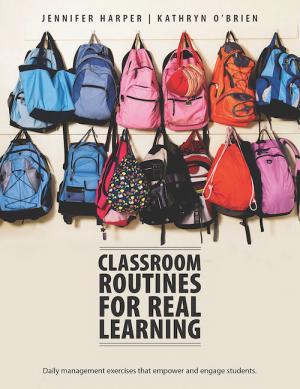
Classroom Routines For Real Learning
Classroom Routines For Real Learning by Jennifer Harper and Kathryn O’Brien is a fresh look at classroom organization and management with a focus on empowering students and promoting independence. The book presents a collection of strategies to organize and manage classrooms with a focus on students co-constructing routines and tips for adjusting theses routines to increase independence and student engagement throughout the school year. It explores the concept of routines and how these can be used to maximize student learning. It looks at the shift from traditional teacher-imposed routines to co-created routines that create a more inclusive and student-centered learning environment.
Harper and O’Brien explain that routines provide stability, consistency and are important for time management in our classrooms. These routines are needed to help students feel stable and successful. With a shift towards student-directed learning and an infusion of critical thinking, students develop intrinsic motivation and a deeper responsibility for their own learning. There are a wide variety of strategies inside this text, everything from organizing coat hooks, class supplies, goal setting and homework routines. Some traditional ideas are shared with a fresh tweak on student responsibility as well as some new ideas to keep students engaged in learning. Each of the routines is shared as a mini-lesson plan where the Strategy is described and a Debrief shared with an Objective, Key Words and Suggested Grades. Applicable for all grade levels, ideas are labeled early primary, primary, junior and intermediate.
This book would be a valuable resource for teachers wishing to focus on building a strong classroom community of independent learners, connect to learning skills and freshen up their classroom routines with a focus on student-driven learning. The assessment section provides ideas for gathering information about student learning and minimizing large piles of marking. It explores Assessment For Learning, As Learning and Of Learning and includes a few samples of “exit tickets” and “deposit slips” to gather information about student thinking.
This is a great reference as we head back into the classrooms and work to keep our students at the center of everything we do.
Deborah Cote is a member of the Peel Teacher Local.